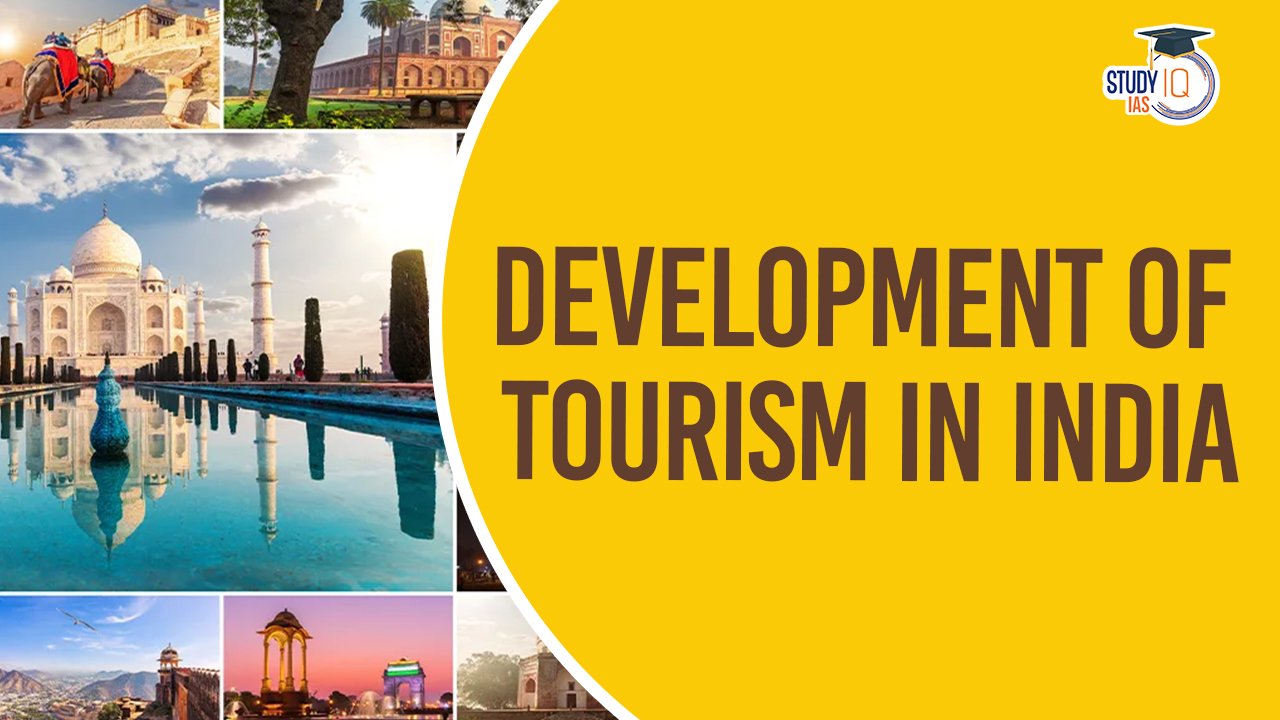Table of Contents
Development of Tourism in India
Tourism in India holds immense potential as a significant contributor to the country’s economy, despite facing various challenges. With its rich cultural heritage, diverse landscapes, and historical monuments, India has always been a magnet for travellers from around the globe. However, the development of this sector has been met with both successes and hurdles.
Current Landscape and Economic Impact of Tourism in India
Tourism in India contributes approximately 4.6% to the nation’s GDP, as per the Ministry of Tourism. Despite not being prioritized by the government, the sector plays a vital role in job creation, supporting over 32 million jobs in 2021. The World Travel and Tourism Council reported that in 2021, tourism generated ₹13.2 lakh crore (US$170 billion), accounting for 5.8% of India’s GDP.
However, the COVID-19 pandemic significantly impacted tourism, leading to a decline in foreign tourist arrivals by 44% in 2022 compared to 2019 figures. Nonetheless, India’s domestic tourism market remains robust, with over 1 billion domestic tourist visits recorded in 2012.
We’re now on WhatsApp. Click to Join
Strengths and Challenges in India’s Tourism Sector
India possesses numerous strengths that bolster its tourism sector. The country’s cultural and natural resources, including historical monuments, scenic landscapes, and diverse wildlife, attract travellers worldwide. Additionally, India’s air transport infrastructure and natural resources are highly regarded globally.
However, the sector also faces several challenges. Infrastructure deficiencies, such as inadequate road networks and outdated facilities, hinder the tourist experience. Moreover, safety concerns, including issues related to women’s safety and petty crime, can deter potential visitors. Additionally, bureaucratic red tape and complex visa procedures have been cited as barriers to tourism growth.
Opportunities for Growth and Development of Tourism in India
Despite the challenges, India’s tourism sector offers ample opportunities for growth and development:
- Diverse Attractions: From historical monuments and cultural festivals to scenic landscapes and adventure sports, India offers a wide range of tourist attractions. Leveraging these diverse offerings can attract travellers with varied interests and preferences.
- Cultural Experiences: India’s rich cultural heritage and traditions provide unique experiences for tourists. Promoting cultural tourism, including heritage walks, culinary tours, and traditional art forms, can attract visitors seeking authentic cultural experiences.
- Medical Tourism: India has emerged as a leading destination for medical tourism, offering high-quality healthcare services at competitive prices. With state-of-the-art hospitals and skilled medical professionals, India attracts patients from around the world for treatments ranging from surgeries to wellness retreats.
- Rural and Eco-Tourism: There is growing interest in experiential and sustainable tourism experiences, such as rural homestays, wildlife safaris, and initiatives. Encouraging community-based tourism initiatives can benefit rural economies while conserving natural resources.
- Digital Transformation: Technology plays a crucial role in enhancing the tourism experience, from online booking platforms and virtual tours to digital marketing strategies. Embracing digital innovations can improve accessibility, convenience, and connectivity for travellers.
Government Initiatives to Promote India’s Tourism Sector
The Government of India has taken several initiatives to promote tourism development:
- Policy Support: The Ministry of Tourism formulates national policies and collaborates with stakeholders to develop and promote tourism. Efforts are underway to simplify regulations, improve infrastructure, and enhance the overall tourism experience.
- Incredible India Campaign: The Incredible India campaign showcases India’s tourism potential through multimedia campaigns, roadshows, and promotional events. It highlights the country’s cultural diversity, natural beauty, and hospitality to attract international travellers.
- Niche Tourism Promotion: The government is focusing on promoting niche tourism products such as rural, cruise, medical, and eco-tourism. Specialized marketing campaigns and infrastructure development initiatives are aimed at tapping into niche markets and diversifying the tourism portfolio.
- Public-Private Partnerships: Collaborations between the government, private sector, and local communities are essential for tourism development. Public-private partnerships facilitate investment, infrastructure development, and skill enhancement in the tourism sector.
Future Outlook For Tourism Development in India
Despite the challenges posed by the pandemic and other systemic issues, the outlook for tourism in India remains optimistic. With concerted efforts from the government, private sector, and other stakeholders, the sector is poised for growth. Forecasts suggest that tourism could contribute 7.2% of India’s GDP by 2031, underscoring its potential as a key driver of economic development.
In conclusion, tourism development in India presents challenges and opportunities. By addressing infrastructure deficiencies, promoting niche tourism products, and prioritizing safety and security, India can unlock the full potential of its tourism sector and emerge as a premier global destination for travellers.


 Growth in Gold Loans and NPAs, Reasons a...
Growth in Gold Loans and NPAs, Reasons a...
 How RBI Responded To Global Trade War Ch...
How RBI Responded To Global Trade War Ch...
 Why Confidence in US Dollar is Falling?
Why Confidence in US Dollar is Falling?





















